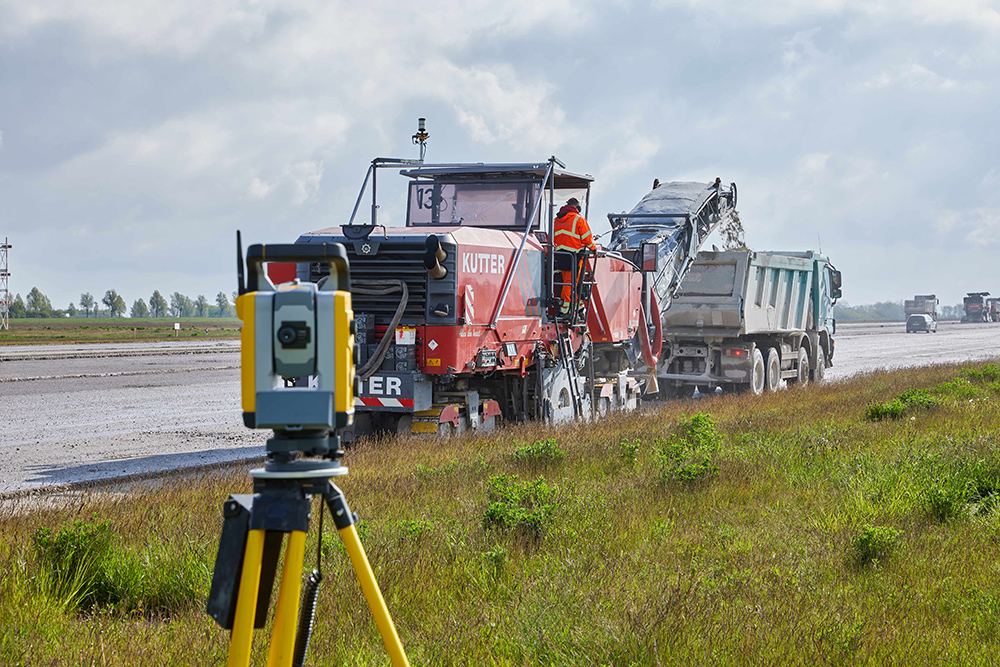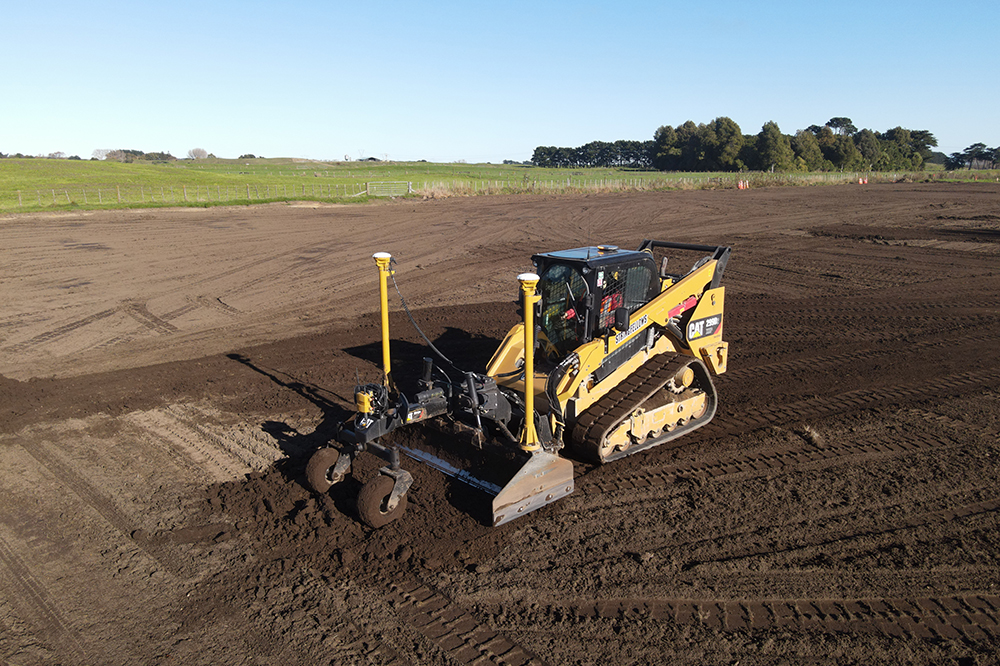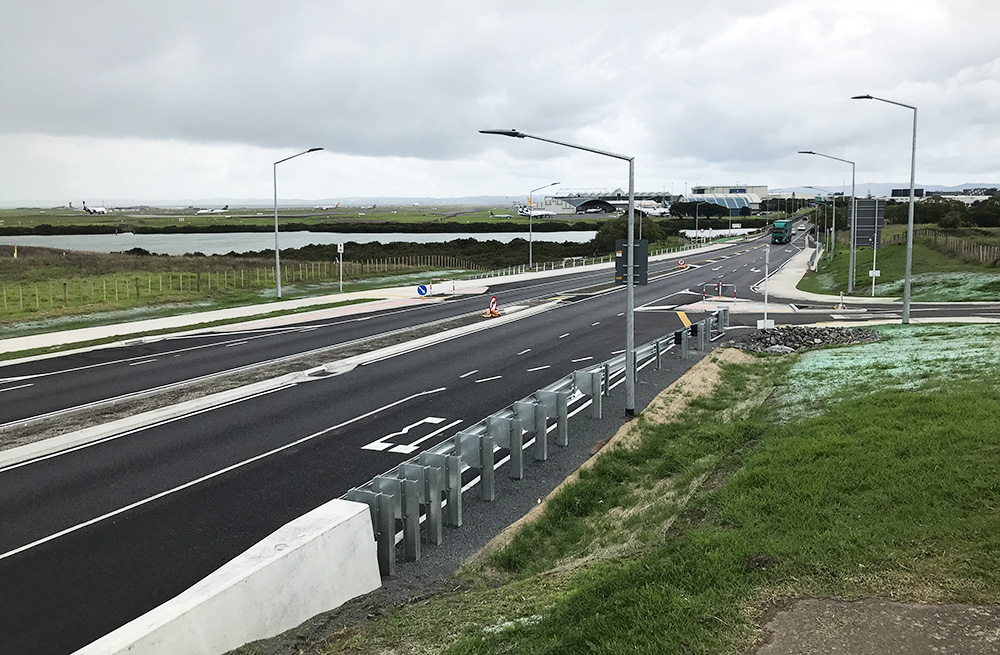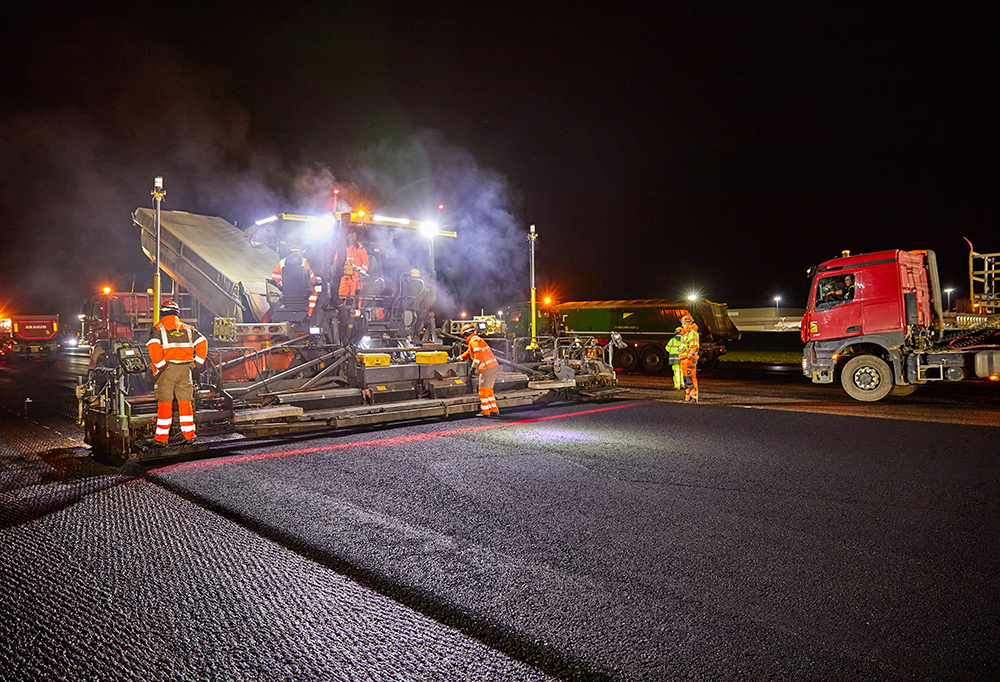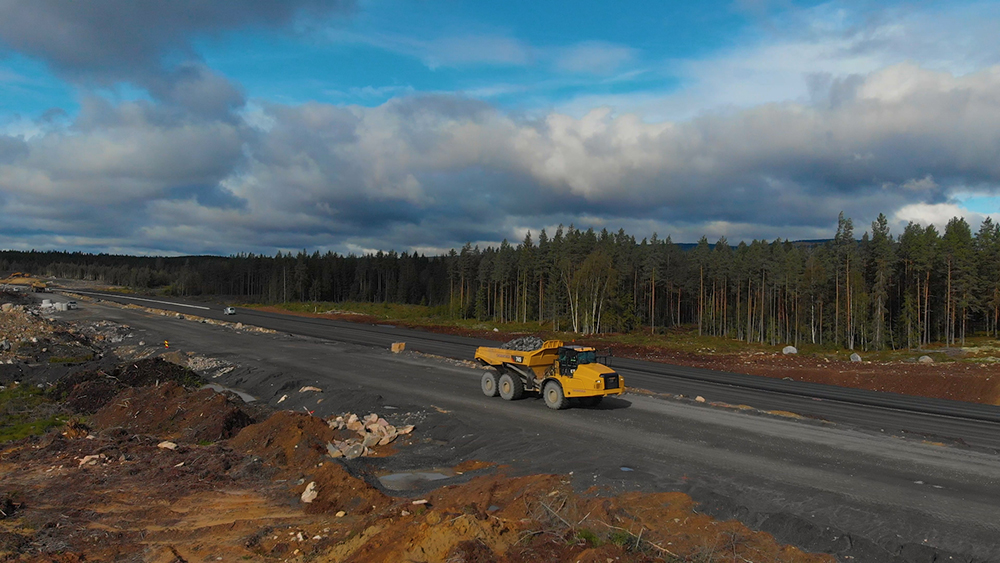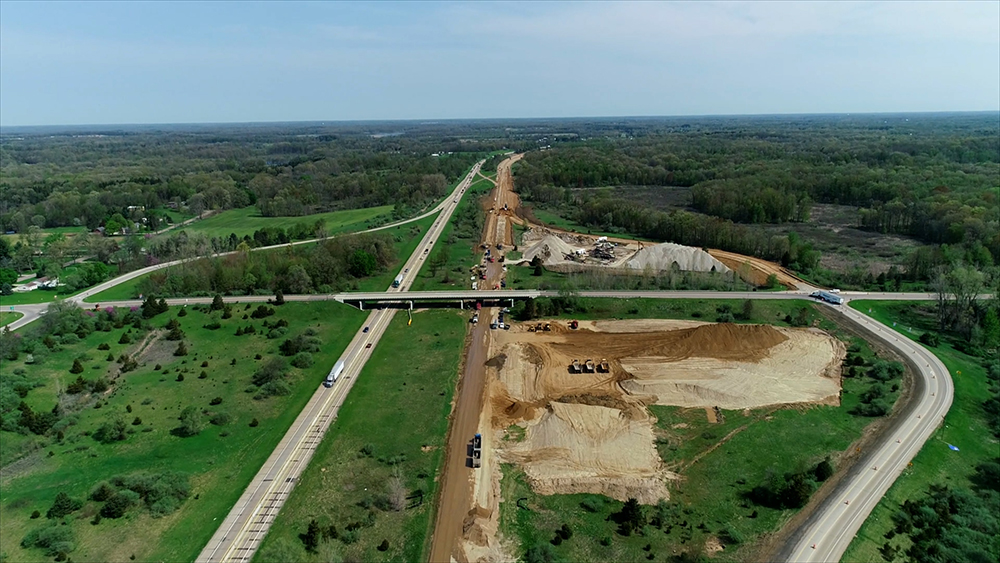
The project includes the reconstruction of around 37km of rural, four-lane interstate over the course of three years. Broken into four distinct work packages, the design-build project includes improvements to ramps and roadways, as well as a number of bridge rehabilitations along the corridor.
Michigan Paving & Materials, a CRH Company, won the bid for the project, with construction on the first phase beginning in 2021. The prime contractor looked to heavy civil contractor Hoffman Bros to perform earthwork activities.
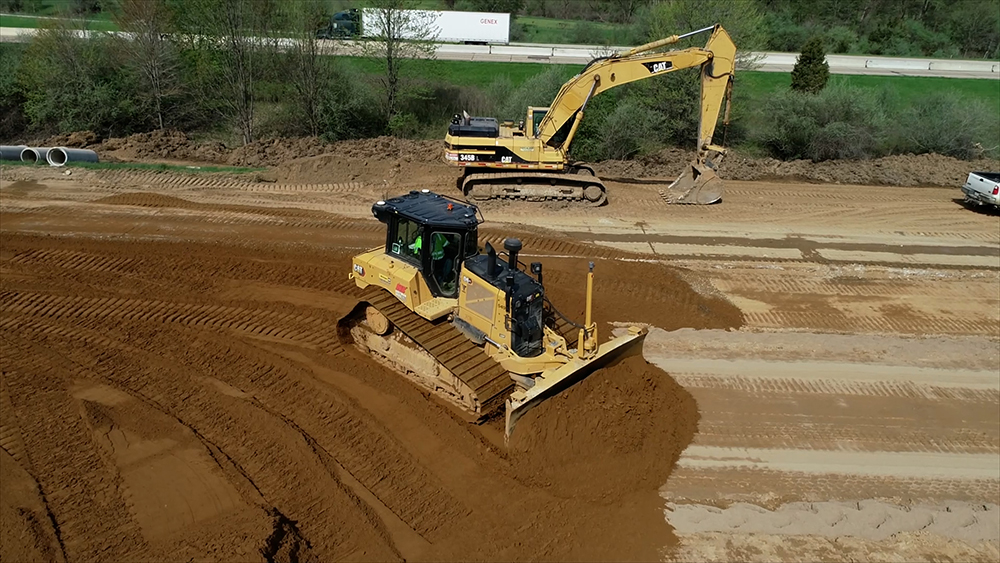
The first phase of the I-69 Rebuild project, completed in 2021, included a 14.5km rebuild of the northbound and southbound sides of the interstate from Olivet to Charlotte in Eaton County, as well as reconstruction of two interchanges at Cochran Road and M-50.
Based in Battle Creek, Michigan, Hoffman Bros has made effective use of new technology from Trimble to help deliver the project. The firm specialises in site development, underground utility, road, highway and airport construction, employing over 150 and owning over 200 pieces of equipment.
A key challenge for Hoffman was the streamlining of its work for the I-69 design-build reconstruction project. Using wireless communications and machine control for the earthworks portion of the project delivered major gains in efficiency.
Dave Bell, project manager for Hoffman Bros explained, “We’ve been on some massive earthwork jobs that required a lot of our fleet—but usually our equipment is not spread out in a linear fashion. For this job, we needed to rethink how we developed our technology-enabled connections if we were going to meet the fast-paced and ever-changing design-build workflow.”
The company employed the Trimble Earthworks Grade Control Platform, with a range of application-specific tools. Onsite, these included the Trimble GCS900 Grade Control System, the Trimble CCS900 Compaction Control System, the Trimble Siteworks Survey Positioning System and the Trimble SPS930 Universal Total Station. To manage the technologies the firm used the Trimble Business Center Software and the Trimble WorksManager Software.
The benefits of this approach included improved connectivity across project corridor, increase production, decreased costs and improved worker safety. Other advantages included reliable data flow, improved communications, accurate project progress tracking and a successful bid estimate leading to a winning bid.
Integral to workflow is machine control, a technology that Hoffman Bros has been committed to for two decades. Today, much of the firm’s fleet of equipment, particularly excavators, graders and dozers, is outfitted with Trimble GCS900 Grade Control System, and more recently, the Trimble Earthworks Grade Control Platform. The company takes advantage of a full range of machine control configurations, including GNSS, lasers, Trimble SPS930 Universal Total Stations and even sonic tracers for slope control as needed. This increases the versatility of their machines to work efficiently in a number of different applications depending on the need.
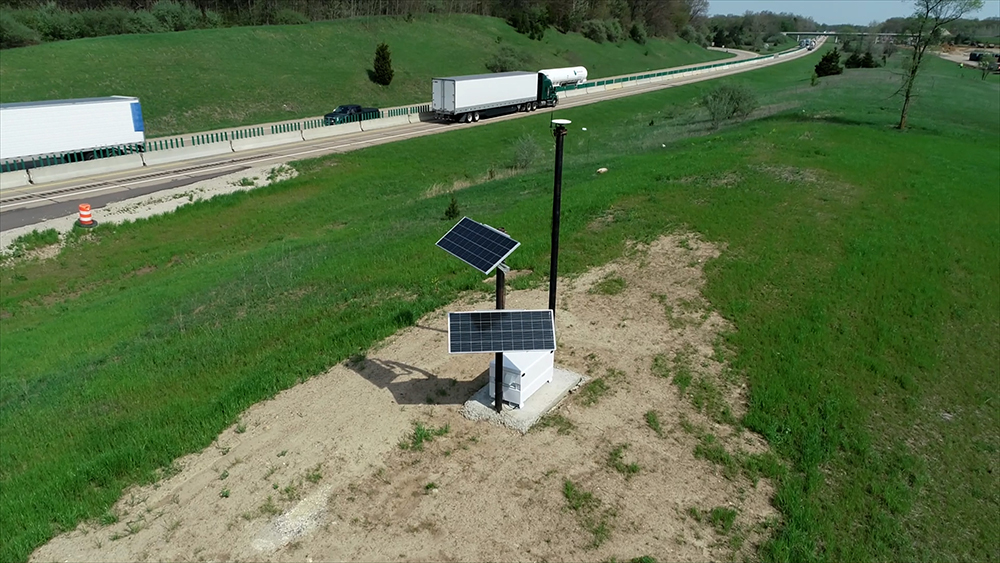
“Our philosophy has always been to give our operators and field crews all the tools they need to be successful. Also, our operators don’t stay in one piece of equipment; they rotate,” explained Bell. “Our efforts toward continuous improvement come largely from the field, both in terms of how to do a job and the technology advances that might improve activities. We look to our operators to provide input on how to optimise tasks for efficiency and quality, and their input plays a large part in our decision-making process.”
For the first phase of the I-69 job, Hoffman Bros had around 15 pieces of 3D machine-controlled equipment on the job at any given time.
Model designs are typically prepared in-house, largely by Bell, using Trimble Business Center. Trimble WorksManager Software provides the ability to flash update design file changes to the required machines. Trimble Business Center is also used for earthwork takeoffs, mass haul analysis and site optimisation.
“For I-69, we have an outside engineering firm that is creating the models and delivering them to us,” said Bell. “Standard practice is that I adjust the linework and format the models for our operators and send them off.”
However, when it came to delivering up-to-date models to the machines in a timely manner, connectivity presented a challenge.
“Unlike a large earthworks project on a building site, for example, our problem was the long stretch of curving road on I-69,” said Bell. “With a conventional radio base station setup, we’d have to set up multiple base stations to cover the entire project.”
The company reached out to Trimble distribution partner SITECH Michigan for advice and learned about Trimble’s Internet Base Station Services (IBSS). This solution broadcasts Real-Time Kinematic (RTK) corrections from the base station over the internet, delivers accurate GNSS for site positioning and machine control at a low cost.
“SITECH Michigan Rep, Jason Winger, gave us a demonstration, and we were impressed. We decided to give it a try, and after just a day or two of training, we were up and running on our own,” said Bell. “With IBSS, we can connect to all of our equipment from one single base station, which proved invaluable on the I-69 project. As a design-build project, changes happen regularly to fit the existing conditions or accommodate the schedule, and we need to adapt. The transfer of data to our equipment on the jobsite has been seamless, particularly to the Trimble Earthworks solution.”
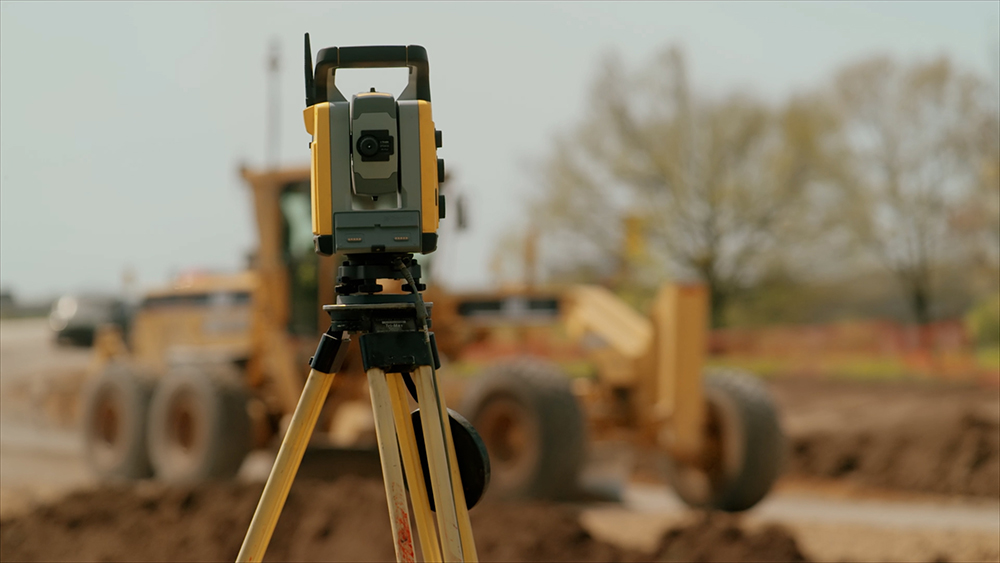
Hoffman Bros completed the first phase I-69 project earthwork on time and on budget. As the project team prepares for the second phase of the I-69 project this year, they are also continuing to look for ways to advance and improve their workflow.
“A big part of our success has been our relationship with SITECH Michigan, who keeps us current on the new advancements that could optimise our processes,” said Bell. “They know what we have in our fleet, so they have the best insight into areas of potential improvement. It’s a great team effort.”
For instance, Bell is looking forward to testing Trimble WorksOS for as-built validation this year on the I-69 project. He also plans to give field crews visualisation capabilities similar to what operators have using Trimble SiteVision, an augmented reality solution that enables project teams to see spatial data in a real-world context. With Trimble SiteVision, field crews can use Android phones to conduct inspections, track progress and make quick survey measurements - and particularly important on this design-build project, help communicate design adjustments.
“In today’s highly competitive environment, it’s essential that we provide our people with the best possible tools to deliver jobs,” said Bell. Hoffman project manager, PE Bill Rizor reiterates this fact: “We’ve utilised Trimble grade control solutions for over 20 years on our projects to increase production, decrease costs, and improve worker safety. The production gains we have realised through the utilisation of grade control technology has helped to shape the “Hoffman way” of performing earthwork and grading operations. In cooperation with SITECH and our engineering partners, we continue to find new ways to improve our project workflows utilising the latest technological advancements Trimble has to offer.”
The I-69 Rebuild project in Eaton and Calhoun Counties continues in 2022 with work on phase two, a 19km stretch of the corridor on the northbound side and then the same stretch on the southbound side in 2023.



